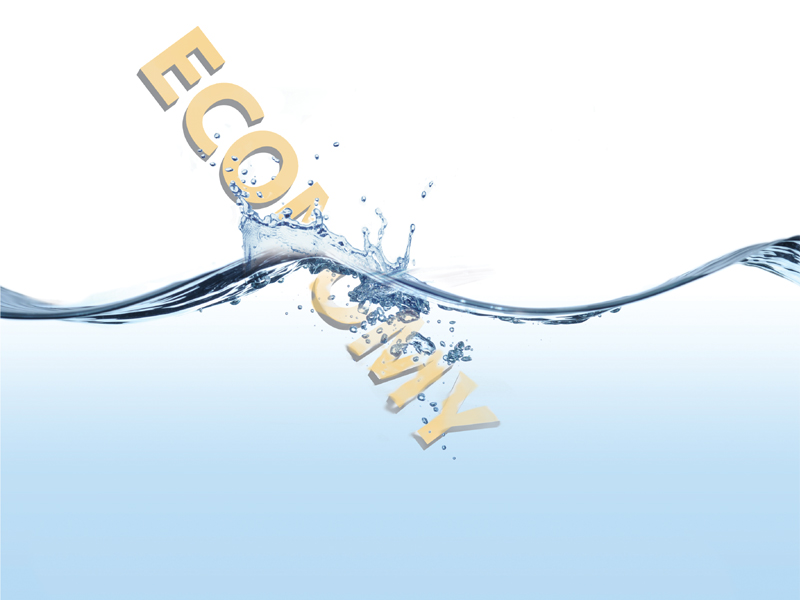
Amid deep-rooted concerns over a “directionless” economy due to failure of the previous government and inability of the caretaker setup to take immediate meaningful steps, the Asian Development Bank has warned that Pakistan’s current growth model is unsustainable that also undermines future prospects.
In its Asian Development Outlook, the Manila-based lending agency has painted an extremely bleak picture of Pakistan’s economy that is “directionless” and immediate recovery chances are almost nil amid a worsening balance of payments position.
“A difficult political situation stalled effective policy response to macroeconomic and structural problems, especially regarding energy, and the end of the government’s 5-year term in mid-March limited political scope for major policy or structural reforms,” it said.
The economic developments in this fiscal year are unfolding along broadly similar lines as previous year, but with “deepening concerns about sustainability and the adequacy of forex reserves”.
A missing link in the ADB’s analysis of political failures is the role of bureaucrats in running the affairs of the government who often do not disclose actual extent of problems to the leadership.
The ADB’s fears about policy inaction are becoming true as caretaker Prime Minister Mir Hazar Khan Khoso has not been able to appoint a finance minister and no concrete measures have been taken on the economic front.
How much the government is sincere about addressing sluggish growth prospects, as highlighted by the ADB, can be gauged from the fact that so far three briefings on the economy have been given to the premier and the Planning Commission deputy chairman was missing in all meetings. “PM’s Principal Secretary Seerat Asgar is not giving him an appointment despite repeated attempts,” said a PC official.
Highlighting flaws in the growth model, the ADB said private consumption expenditure expanded by 11.6% in the last fiscal year that provided nearly all GDP growth. The consumption benefited from rising remittances and government salary increases.
The shift to consumption-based growth was because of a constant fall in fixed investment that fell for the fourth year in a row to 10.9% of GDP, the lowest since 1974 and the lowest among major Asian countries, the ADB said.
“The steady decline in investment, coupled with reliance on consumption for growth, is unsustainable and undermines future growth prospects,” the lending agency warned. In just one year, the declining investment shaved off 1.4 percentage points from growth.
According to the ADB, last year was the fifth consecutive year of low growth, falling investment, excessive fiscal deficits, high inflation and a deteriorating external position that weighed heavily on the economy.
The analysis seems a report card on the economic performance of the previous government, which completed its tenure on March 16 and changed five finance ministers during its rule.
On the back of low capital inflows and heavy debt repayments, the ADB assessed significant downside risks to future outlook. Low foreign reserves, which covered less than two months of imports in February this year, spark concern over sustainability of the external sector.
“Pressure on reserves is expected to continue, with an additional $1.7 billion due to the IMF before the end of fiscal year 2013 and $3.2 billion payments during the next fiscal year 2014,” the ADB said. The exchange rate will remain under pressure also in the next fiscal year.
The agency projected 3.6% growth for the current year, but said without energy sector reforms, Pakistan will not be able to achieve 7% growth, required to accommodate bulk of the youth looking for jobs. The Planning Commission’s Framework for Economic Growth also talks about 7% growth rate, but it has remained unimplemented.
On expectation that there will be no substantive improvement in the country’s fiscal and energy imbalances in FY14, inflation is expected to edge up to 9.5% and this year’s budget deficit will be at 7.5% excluding electricity arrears.
When the ADB was painting a gloomy picture of Pakistan’s economy, at the same time it found Asian economies returning to healthy growth.
Published in The Express Tribune, April 10th, 2013.
Like Business on Facebook to stay informed and join in the conversation.
COMMENTS (23)
Comments are moderated and generally will be posted if they are on-topic and not abusive.
For more information, please see our Comments FAQ


1731570357-0/elon-musk-(1)1731570357-0-165x106.webp)
-(1)1717678110-0/Kendrick-(1)-(1)1717678110-0-165x106.webp)

1732486769-0/image-(8)1732486769-0-270x192.webp)











@ Mirza, Khalid, Vivek - your sarcasm seems to be lost on most of the readers - good posts though!
The margin for recovery is very slim, and goes slimmer by the minute.
This article clearly shows that pakistanis are not following the tenets of Islam clearly. Otherwise how can a state created for Muslims fail? This means that either Islam is wrong or Pakistanis are not following Islam correctly ? Since, Islam cannot be wrong, then this can only mean that Pakistanis are not good muslims. As a first step Pakistanis have to start reading the Holy Koran properly, since the Holy Koran is the world's first economics manual. The solution to our economic woes is contained the Holy Koran.
@Mirza Did the nuclear arsenals saved former Soviet Union from falling apart in 1991.
The economic situation in the country alone is enough reason to vote for Musharraf in the elections.
All you need to revive the economy is improve the law & order situation, secure investors rights and provide energy. Infrastructure is needed however, this won't be a major hurdle if we continue with the existing infrastructure. There is plenty of land available, the raw material and the labour is cheap here, the corporate laws and the insolvency procedures are considered as one of the easiest in the world. Checkout world bank's Ease of Business Index. We are better than India, Egypt, Indonesia, Russia and Brazil. Forget foreigners, overseas Pakistanis are very much willing to invest in Pakistan once situation is improved.
@Pakistani democrate : dont blame democracy for this, blame your govt for not handling or infact not knowing how to run democracy....
As usual "democracy is the best revenge" it is becoming true, Only by giving vote and waiting for 5 years is not good we have to do some thing by our self to make our country prosper no one will help Pakistan if we our self do not do any good. Vote for anyone but do vote in this election.
ADB,IMF,WB will never be our friend and foe is always confirm
@ETdontKnow: That was propaganda. This is cold, hard reality!
FBR badly has let down the nation with poor tax collection.FBR has become dysfunctional.Unless tax revenues increase substantially, this nation has no future.Look at the taxes paid by MNAs and now potential candidates.
Isn't ADB one of the owners of KESC? One outcome of Odious Loans, Debt~Equity swaps & un restrained taxation. Is Cyprus style haircut next?
This report was issued by the ADB and ET merely published it.
Another conspiracy and propoganda campaign against my beloved homeland. They should realize that we are in the middle of a war, we need to increase our defence budget, defence housings should mushroom in every big city of the country. How come our GDP is not growing? Farms, bakeries, mills, factories, banks, insurance companies are flourishing under the efficient management of our Bravos n Charlies. I donno, why ET is always inclined to waste its precious space by printing such useless reports.
Just yesterday ET told us 'its not so bad', still sticking to your analysis ET?
nice to see some one talking sense at ET . . . Last piece telling PM economy is in its golden era just snatched words from my mouth about employees at ET . . .
Really? Only yesterday, ET was boasting "yes prime minister, the economy is not tanking" or something to that effect! The PTI Tsunami is really making a lot of institutions go completely bonkers.
All rumours spread by CIA/RAW/MOSSAD........... China will bail us out..
which info is correct? this one or the one published yesterday? http://tribune.com.pk/story/532411/the-only-way-is-up-inheriting-an-opportunity-not-a-lemon-business/
Pakistanis and especially our Sindhi brothers should vote for PPP again. Don't believe in this news. It's a conspiracy against bhutto family and zardari. One more term of zardari or Nawaz and there will be no Pakistan.
ET...just yesterday you had this rosy piece on how well economy is doing and it would be a cakewalk for any future PM....and just within 24 hours this new piece thrashed your previous 'findings'....Poor reporting, poor research..poor journalism.
We need to increase defense expenses and reduce educatio, healthcare and other civic waste of money. We are a nuclear power and cannot be dictated by these bullies. We do not need their monies we have aplenty. We have much bigger army than any in the Europe, or Japan. We have what they cannot afford.
If qualified people are in control of critical economical policies and decisions then we can see change in direction of our failing economy. Case in point ...during Musharraf's reign our economy was so good that EU decided that Pakistan no longer needed economic assistance.